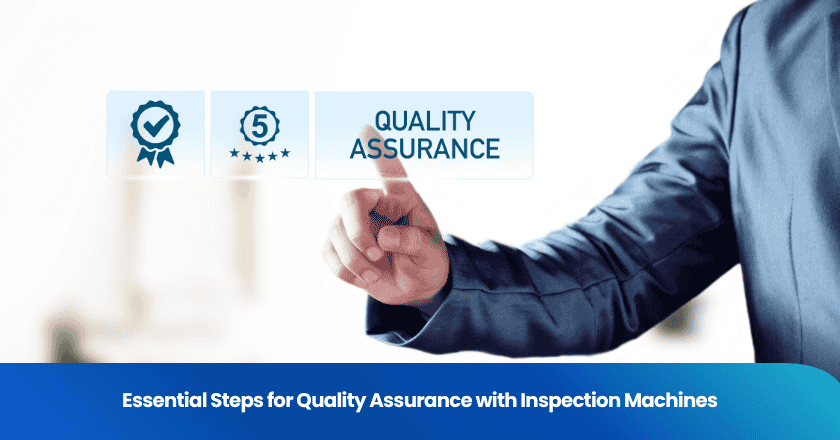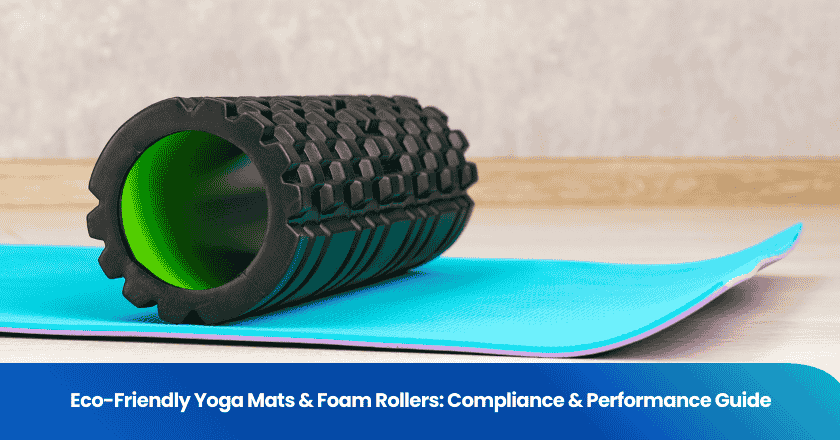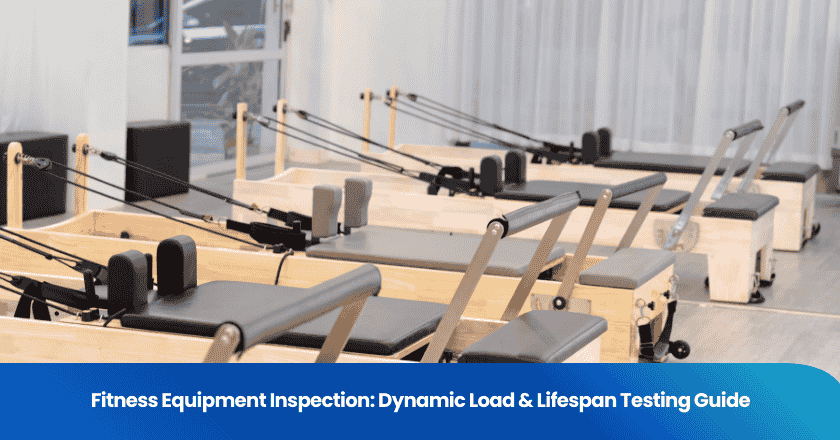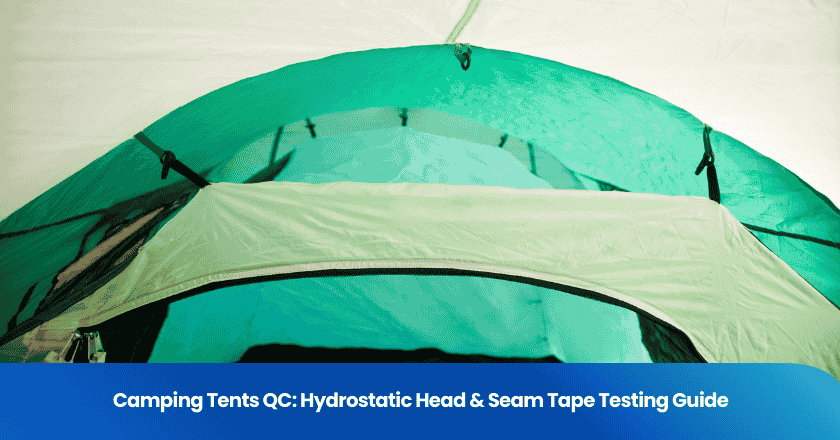
Quality assurance stands at the core of manufacturing excellence. Today, inspection machines and automated visual inspection drive a significant shift in how you detect defects and maintain high standards. Automated visual inspection consistently outperforms manual checks, reducing error rates caused by fatigue and subjectivity. These systems deliver rapid, accurate assessments and adapt to new defect types. As adoption grows, the market reflects this trend:
| Metric | Value |
|---|---|
| Industry Size (2025) | USD 785.6 Mn |
| Forecast (2035) | USD 1291.9 Mn |
| CAGR | 5.1% |
You can leverage these advancements to enhance your inspection processes.
Key Takeaways
- Automated visual inspection significantly reduces human error and increases production efficiency, ensuring high-quality standards.
- Regular calibration of inspection machines is crucial for maintaining accuracy and compliance, preventing costly production errors.
- Establish clear quality inspection criteria and metrics to identify defects early and improve overall manufacturing processes.
- Investing in staff training enhances operational skills and promotes a culture of quality, leading to better product outcomes.
- Utilize data analytics from inspection processes to identify trends, optimize workflows, and drive continuous improvement in quality assurance.
Inspection Machines in Quality Assurance
Role in Modern Manufacturing
You see inspection machines transforming modern manufacturing environments. These solutions play a vital role in your daily operations. Automated quality inspection ensures quality control at every stage of production. You can rely on these systems for safety assurance and efficient production. Automated visual inspection systems examine products for surface defects and manufacturing defects with unmatched speed and accuracy.
- Inspection machines perform systematic quality inspection to catch issues early.
- Automated quality inspection solutions rewind material rolls with precision and manage slitting and tension control for consistent winding.
- Visual inspection systems tag or remove defects, keeping your production line running smoothly.
You benefit from automated quality inspection because it reduces human error and increases throughput. Automated visual inspection systems adapt quickly to new defect types, making them essential for modern quality control. These solutions help you maintain high standards and deliver consistent results.
Benefits for Consistency and Compliance
Automated quality inspection brings consistency to your processes. You use visual inspection systems to detect even the smallest surface defects. Automated visual inspection ensures that every product meets your quality inspection criteria. X-Ray inspection systems, as part of automated quality control systems, provide non-destructive testing. They detect defects and foreign contaminants in real time, supporting your quality assurance goals.
- Inspection machines verify packaging integrity, which is crucial for industries like pharmaceuticals.
- Automated quality inspection solutions help you comply with regulations by identifying and removing defective products before they reach consumers.
- Visual inspection systems generate traceable inspection records, supporting accountability during audits.
You rely on regular quality inspection to maintain a safe working environment. Inspection machines document every step, providing proof of compliance and helping you avoid penalties. Automated visual inspection and quality control solutions ensure you meet industry standards and deliver safe, reliable products.
Defining Quality Inspection Standards
Setting Measurable Criteria
You need clear, measurable criteria to ensure effective quality inspection. Start by defining quality standards for your products. These standards set the foundation for every inspection process. Use specific attributes to guide your inspections:
- Size
- Color
- Functionality
- Branding
- Packaging
- Defects
- Manufacturing flaws
You can measure defects using metrics like Defective Parts Per Million (DPPM) and Defects Per Million Opportunities (DPMO). These metrics help you pinpoint where defects occur most often in your production line. By tracking these numbers, you can improve your processes and monitor supplier quality.
A structured approach to quality inspection includes several key steps:
1. Quality standards definition
2. Raw material quality verification
3. Sampling and batch validation
4. In-process quality checks
5. Nonconformance reporting and corrective and preventive actions (CAPA)
6. Documentation and recordkeeping
7. Final product inspection
8. Continuous improvement
Tip: Consistent documentation supports traceability and helps you identify trends in quality inspection results.
Aligning with Regulations
You must align your quality inspection standards with international regulations to compete in global markets. International standards require you to meet strict quality benchmarks. Following these standards not only ensures compliance but also drives operational excellence.
- International regulations demand that you comply with global quality standards.
- Meeting these requirements helps you achieve better product quality and higher customer satisfaction.
- Implementing frameworks like ISO standards strengthens your quality inspection process.
You benefit from aligning your quality inspection with regulations because it builds trust with customers and regulators. This approach also prepares your organization for audits and market expansion.
Selecting Inspection Machines
Evaluating Technologies
You face a wide range of technologies when selecting inspection machines for your production line. Automated visual inspection and machine vision systems lead the way in quality inspection. These solutions use advanced image processing software to analyze products and detect defects with high precision. You can choose from several options, each offering unique capabilities for defect detection and quality inspection.
| Technology Type | Description |
|---|---|
| AI-Driven Visual Inspection | Uses artificial intelligence for enhanced defect detection in manufacturing processes. |
| Automated Optical Inspection (AOI) | Automates the inspection of electronic components and assemblies for quality control. |
| Non-Contact Measurement Solutions | Measures without physical contact, ensuring precision and avoiding damage. |
| Telecentric Lenses | Delivers accurate measurement without distortion or perspective errors. |
| Subpixel Edge Detection Algorithms | Detects lines, gaps, and contours at a micron level. |
| Automatic Tolerance Checking | Checks measurements against set tolerances and alerts for deviations. |
| Robotic Inspection System | Inspects complex parts using robotic technology. |
| Customized Quality Inspection System | Tailored for specific manufacturing needs and standards. |
You should evaluate inspection software for manufacturing that integrates seamlessly with your production line. High-resolution cameras and sub-pixel accuracy help you identify tiny deviations. Image processing software supports 3D inspection capabilities, which are essential for complex assemblies.
Matching to Production Needs
You must match inspection machine capabilities to your production requirements. Consider sensor resolution, accuracy, and environmental tolerance. The right inspection software for manufacturing will handle data storage and transmission efficiently. Maintenance requirements affect operational efficiency and downtime.
- High-resolution cameras (at least 5 megapixels)
- Sub-pixel accuracy for tiny deviations
- Ability to identify various defect types
- 3D inspection for complex assemblies
You need inspection machines that integrate smoothly with your existing production line. Compatibility with current hardware and software minimizes disruption. Assess upfront costs versus long-term ROI. Automated systems require substantial investment but deliver improved accuracy and reduced labor costs. Long-term savings come from enhanced quality inspection and operational efficiency.
Choose a system that is scalable and flexible. You can adjust to changes in production volume or product types without a complete overhaul.
Integrating Inspection Machines
Workflow Planning
You need a clear plan to integrate inspection machines into your production environment. Start by defining your quality inspection requirements before you select any system. This step ensures that your new equipment will meet your goals. Begin with pilot projects to test the value and refine your approach. You should always check that lighting and imaging conditions are optimal for accurate results. Training programs for operators and maintenance staff help everyone understand how to use the new technology. Set up procedures for handling and documenting defects so you can track issues and improve over time. Collect and analyze data from your quality inspection process to drive improvements in both inspection and production. Keep communication open between your quality, production, and engineering teams to solve problems quickly and keep everyone aligned.
Best practices for workflow integration:
1. Clearly define inspection requirements before selecting a system
2. Start with pilot projects to demonstrate value and refine approaches
3. Ensure proper lighting and imaging conditions for optimal performance
4. Develop comprehensive training programs for operators and maintenance staff
5. Establish clear procedures for handling and documenting defects
6. Continuously collect and analyze data to improve both inspection and production processes
7. Maintain regular communication between quality, production, and engineering teams
Minimizing Disruption
You want to keep your production running smoothly during integration. Preventive maintenance inspections help you avoid unexpected downtime. Use automated scheduling to assign tasks, set inspection intervals, and track progress. This approach ensures that maintenance goals are met and reduces the risk of equipment failure.
A structured field inspection process prevents small issues from becoming bigger problems. Regular inspections reduce downtime by allowing you to plan maintenance and avoid last-minute fixes. Integrated workflows connect quality inspection directly to asset management, planning, and reporting systems.
Regular equipment inspections save costs and improve operational efficiency. You lower the risk of equipment failure and avoid expensive repairs or disruptions to your production. By planning carefully and using these strategies, you can integrate inspection machines with minimal impact on your daily operations.
Calibration and Validation
Importance of Regular Calibration
You must prioritize regular calibration to maintain the accuracy and reliability of your inspection machines. Calibration forms the backbone of effective quality assurance. It ensures that your equipment delivers precise measurements and supports your compliance efforts. When you calibrate your machines on a routine basis, you protect your production from costly errors and maintain the integrity of your quality control process. Consider these key reasons for regular calibration:
- Calibration ensures precision and compliance with regulations, which are essential for maintaining product quality.
- Regular calibration helps prevent costly errors and supports quality control processes.
- It maintains the integrity of measurements, crucial for meeting customer expectations and regulatory requirements.
You may encounter calibration errors that can impact defect detection. The most common issues include:
1. Drift in Accuracy: Instruments can lose calibration over time, leading to inaccurate readings. You can address this by recalibrating and monitoring your equipment frequently.
2. Environmental Influences: Factors such as temperature or humidity, as well as procedural mistakes, can cause calibration errors. Following proper procedures and using accurate standards help you reduce these risks.
Tip: Schedule calibration checks at regular intervals to catch potential issues before they affect your inspection results.
Validation Schedules
You need a structured validation schedule to confirm that your inspection machines perform as expected. Validation protocols differ depending on the type of equipment you use. The following table outlines the main phases of validation and their purposes:
| Validation Phase | Description | Purpose |
|---|---|---|
| Installation Qualification (IQ) | Checks system installation and component specifications. | Ensures foundation for quality and reliability. |
| Operational Qualification (OQ) | Tests system functions under normal and stress conditions. | Confirms expected performance and catches issues. |
| Performance Qualification (PQ) | Validates system in real-world conditions. | Ensures system maintains quality during daily use. |
You should document each phase and review your validation schedule regularly. This approach helps you maintain consistent performance and supports your quality assurance goals.
Staff Training for Quality Assurance
Training Programs
You strengthen your quality assurance process by investing in effective staff training programs. Hands-on learning on the plant floor, known as on-the-job training, helps your team develop practical skills with inspection machines. Workshops led by certified trainers cover specific maintenance and operational topics. Online training programs offer flexibility, allowing your staff to learn at their own pace. You can also use AR and VR training to provide immersive lessons without interrupting production. Virtual training sessions through video conferencing improve accessibility for remote teams.
Regular training sessions keep your staff updated on inspection techniques and safety protocols. Practical training teaches your team what to look for during inspections and how to report issues. Safety protocols ensure that inspections are conducted safely and efficiently. Specialized skills training, such as courses on pressure vessel awareness and machine guarding, enhance site safety and inspection accuracy.
You measure the effectiveness of your training programs using key metrics:
| Metric | Description |
|---|---|
| Compliance Rate | Tracks how often inspected items meet standards, showing training success. |
| Time Taken per Inspection | Monitors operational efficiency and highlights areas for improvement. |
| Operator Efficiency | Evaluates staff performance and identifies further training needs. |
Building a Quality Culture
You build a quality-focused culture by making training a central part of your organization. Research shows that investing in employee training increases productivity and profitability. Your staff sees training as a valuable opportunity for career growth, which boosts commitment and engagement. Training programs encourage knowledge sharing and collaboration, leading to higher job satisfaction and reduced stress.
You measure improvements in your quality culture by looking at several factors:
- Establishing clear policies and procedures
- Ensuring consistency and reducing errors
- Increasing productivity and customer satisfaction
- Promoting continuous improvement
Strong team leadership, accountability, and personal responsibility drive your quality culture. You set clear objectives and goals, provide organizational support, and recognize team achievements. These efforts create a dedicated workforce focused on delivering high-quality results every day.
Monitoring Quality Inspection Data
Data Collection and Analysis
You need reliable methods to collect and analyze data from your quality inspection process. Automated systems use advanced tools to capture detailed information about every product. High-resolution cameras and laser scanners examine parts for flaws that human eyes might miss. Sophisticated software processes these images, using computer vision and machine learning to spot even the smallest defects. Statistical process control helps you monitor trends and alerts you to any issues before they become serious problems.
You can also use the latest advancements in data analytics to improve your quality inspection. AI and machine learning analyze large datasets and predict potential issues. Cloud-based solutions give you access to quality documentation from anywhere, making it easier to track nonconformances and audits. Advanced analytics tools help you forecast demand and optimize your supply chain.
Identifying Trends
You gain valuable insights by reviewing both real-time and historical quality inspection data. Real-time analytics let you spot problems as soon as they appear, so you can act quickly. By looking at data over time, you identify patterns and root causes of defects. This approach helps you make informed decisions and improve your processes.
Tip: Establish clear and standardized evaluation protocols. This allows you to adapt your quality inspection to specific product features and respond quickly to market demands.
When you analyze defect data, you can find recurring issues and adjust your processes, designs, or training. Sharing these lessons with your team prevents future defects and supports continuous improvement. You stay competitive by using technology to monitor quality inspection results and respond to trends before they affect your products.
Continuous Improvement in Quality Assurance
Process Optimization
You drive continuous improvement in quality control by optimizing your processes. Inspection machines collect real-time data from every stage of production. This data gives you immediate insights into asset health, allowing you to act quickly and prevent failures. You use predictive maintenance to anticipate potential issues before they disrupt production. Automated alerts and condition-based maintenance streamline your operations and reduce downtime.
- Real-time data collection enables you to monitor equipment and product quality instantly.
- Predictive maintenance helps you avoid unexpected breakdowns and lower operational costs.
- Improved operational efficiency results from automated alerts and targeted maintenance actions.
You analyze inspection machine data to identify bottlenecks and inefficiencies in your production line. By adjusting your processes based on these insights, you enhance quality control and maintain consistent output. Continuous monitoring supports your efforts to meet quality assurance standards and deliver reliable products.
Tip: Regularly review inspection data to uncover patterns and optimize your production workflow.
Feedback Utilization
You strengthen quality control by using feedback from inspection machines. Continuous monitoring and feedback loops drive ongoing improvements in your quality assurance practices. High-speed data analysis goes beyond defect identification. It provides detailed diagnostic information about why parts are defective, helping you address root causes.
- Feedback loops collect data on product quality and performance.
- You use this information to refine manufacturing processes and improve production outcomes.
- Diagnostic insights from inspection machines guide your corrective actions and prevent future defects.
You share feedback with your team to promote collaboration and learning. This approach ensures that everyone understands the importance of quality control and works toward common goals. By integrating feedback into your daily operations, you create a culture of continuous improvement and maintain high standards in quality assurance.
You secure manufacturing excellence by following essential steps for quality assurance with inspection machines. Review the process below:
| Step | Description |
|---|---|
| 1 | Develop an inspection plan that defines quality standards and objectives. |
| 2 | Train and certify inspectors to ensure they are skilled and knowledgeable. |
| 3 | Implement regular audits to identify areas for improvement and ensure compliance. |
| 4 | Commit to continuous improvement by integrating feedback and updating training programs. |
Automated visual inspection transforms your approach. You detect defects in real time, correct issues instantly, and reduce waste. Automated visual inspection uses computer vision and machine learning to monitor production, catching defects that manual checks miss. Over time, automated visual inspection adapts to new patterns, driving ongoing improvement. You benefit from data-driven decisions and consistent quality. Automated visual inspection supports your compliance efforts and prepares you for the future of automated visual inspection. As you look ahead, automated visual inspection will shape the future of automated visual inspection, making your processes smarter and more efficient. Regularly review your quality inspection systems and consider upgrades to stay competitive.
FAQ
What types of defects can inspection machines detect?
Inspection machines identify surface flaws, dimensional errors, missing components, and packaging issues. You can also detect contamination and assembly mistakes. Advanced systems use AI to spot subtle defects that manual checks may overlook.
How often should you calibrate inspection machines?
You should calibrate inspection machines at regular intervals, typically every six months. Frequent calibration ensures accuracy and compliance. Follow manufacturer guidelines and adjust schedules based on production demands.
Can inspection machines integrate with existing production lines?
You can integrate inspection machines with most production lines. Compatibility depends on your equipment and software. Consult with your engineering team to plan seamless integration and minimize disruption.
What training do operators need for inspection machines?
Operators need hands-on training, safety instruction, and technical guidance. You should provide workshops, online courses, and regular refreshers. Training ensures proper use, maintenance, and accurate defect reporting.
How does automated visual inspection improve quality assurance?
Automated visual inspection increases accuracy, reduces human error, and speeds up defect detection. You gain real-time insights and consistent results. Data-driven analysis helps you optimize processes and maintain high standards.
Grow your business with TradeAider Service
Click the button below to directly enter the TradeAider Service System. The simple steps from booking and payment to receiving reports are easy to operate.




